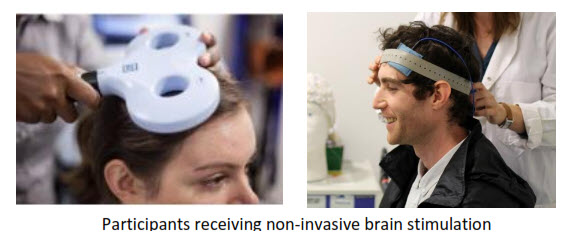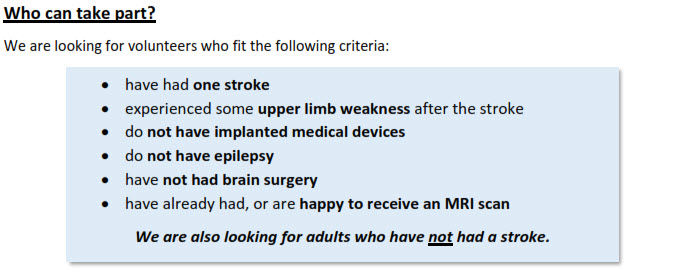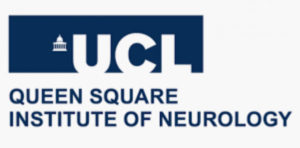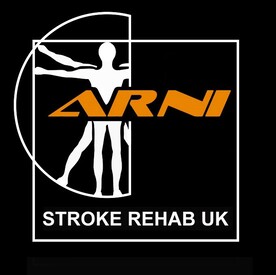Balance control is basically the foundation of your ability to move and function independently. Becoming more skilled at balance recovery helps make you more adaptable to being off balance and more skilled at recovering balance in unstable situations and/or after perturbations. This is why we ask stroke survivors to challenge themselves with off-balance training. Personally, I never fall completely over, even if I trip up. Even when stumbling when breaking into a run for the train or tripping over a raised pavement slab. This is because, over time. I have learned to do something important. My brain knows, via practice, when my balance has failed, and has learned to move my good foot forward instinctively and very quickly, to cope with the trip. This rapid step is key. It allows me to shift the balance of my weight back to a position from which I can recover. I might have to bring my good hand right to the floor at worst to steady myself and cope with the trip, especially when going upstairs, but I do not fall heavily onto my hip and shoulder like so many stroke survivors. You can attain this ability too, by practising balancing on one leg and other techniques which actively invite off-balanceness.
From The Successful Stroke Survivor book Tom Balchin
www.arni.uk.com
#strokesurvivorscan #Neuroplasticity #neurorehab #strokeexercise #strokerecoveryexercises #exerciseafterstroke #strokerehabilation #strokerecovery
... See MoreSee Less
A Mars Bar for you if you can guess the link between broccoli 🥦 and stroke!! Well, the answer is that Did a natural compound found in the everyone's favourite veggie (ahem),called sulforaphane, has been shown in numerous preclinical studies to have amazing protective effects on the brain during a stroke ;)
Researchers found that this powerful compound works in a few key ways. It acts as a super-strong antioxidant and anti-inflammatory agent, basically fighting off the harmful 'oxidative stress' and inflammation that happen right after a stroke and cause damage to brain cells.
Studies show that treatment with sulforaphane can significantly reduce the size of the damaged area in the brain (infarct volume), reduce brain edema (swelling), and improve long-term neurological function and memory outcomes. The key mechanism is that it activates a crucial protective pathway in our bodies called the Nrf2 signaling pathway, which tells our brain cells to ramp up their natural defenses and protective enzymes.
What's really exciting is that some research even suggests that a broccoli-derived compound could potentially improve the effectiveness of existing clot-busting medications like tPA, making those treatments more successful! It can also help reduce the formation of blood clots in the first place, acting as a preventative agent for those at high risk.
While this is mostly in preclinical trials and animal studies right now, it highlights how powerful a healthy diet rich in cruciferous vegetables can be for our brain health and recovery journey. It's a great reminder to eat our gre#ARNIstrokerehabi#strokesurvivorr#broccoli##sulforaphaner#brainhealthS#Neuroprotectioni#healthyeatingp#HopeForFuturelthyEating #HopeForFuture
... See MoreSee Less
Six tips to help you find your Monday motivation:
Focus your attention only one thing at a time.
Write A List.
Stick To A Plan.
Make Sure Your Goals Are Within Reach.
GO FOR IT - MAKE IT YOURS 😉
Make The Most Of Your Time on Task
Review Your Performance.
www.arni.uk.com
#stroke #strokesurvivors #arnistroke #arnistrokecharity #neurorehab #rehabmotivation
... See MoreSee Less
At Pinderfields Hospital in Wakefield, disco dancing is the new therapy! Stroke patients have introduced 'Disco in the Bay'🕺💃 Basically, they're turning a rehab bay into a dance floor every Friday afternoon to support physical recovery and encourage patients to socialise. How brilliant is that?
We all know rehab can sometimes be tough and monotonous, but this innovative idea is proof that staying positive and finding joy in movement makes all the difference! It helps with balance, coordination, and strength in such a fun way! Plus, the social aspect is huge; battling the isolation that can come after a stroke and building community support is probably as important as the physical exercise. 💖
This brings music, movement and laughter back into the recovery journey. What a fantastic way to improve physical and mental well-being ;)👋 ✨
Let's take inspiration from this amazing initiative at Pinderfields! 'Finding the fun' in the journey really is key. Keep dancin', keep smilin' and k#arnistrokerehabstrokesurvivorn#discointhebays#pinderfieldshospitalv#RehabInnovationy#staypositives#StrongerTogethern#dancetherapyPositive #StrongerTogether #DanceTherapy
... See MoreSee Less
Side-bends are popular in any exercise system, and great for rehabilitation after-stroke due to the weakness evidenced in this area. It is a great warm-up exercise and strengthens the neck, shoulders, obliques and outer hips. It involves all of the abdominal muscles as well as the back muscles and enhances lateral mobility of the spine. Attention should be paid to the abdominal contraction to maintain rib connection and prevent the hips and shoulders from rotating.
Find out more about t his exercise in The Successful Stroke Survivor book by Tom Balchin
www.arni.uk.com
#neurorehab #strokeexercise #Neuroplasticity #ARNIstrokerehab #arnistrokecharity #strokesurvivors #strokesurvivorscan
... See MoreSee Less
PLEASE help to raise money for ARNI Stroke Charity via Easyfundraising: with this you don't donate your own money at all. Companies like Ebay donate a certain tiny percentage donation of whatever you spend on their platform -
Say you buy a Xmas present for someone from an Ebay seller (or Goldsmiths, Aspinal of London or other participating company(for example), for £20, the company donates 20p. If it's £250... the company will donate £2.50! Etc...
Please hit the pic below (it's a link) and start helping the ARNI Stroke Rehab Charity ;0 THANK YOU!
... See MoreSee Less
The history of stroke
Hippocrates, the father of medicine, first recognized stroke over 2,400 years ago. At this time stroke was called apoplexy; meaning "struck down by violence" in Greek. This was due to the fact that a person developed sudden paralysis and change in well-being. Doctors had little knowledge of the anatomy and function of the brain, the cause of stroke, or how to treat it. It was not until the mid-1600s that Jacob Wepfer found that patients who died with apoplexy had bleeding in the brain. He also discovered that a blockage in one of the brain's blood vessels could cause apoplexy.Medical science continued to study the cause, symptoms, and treatment of apoplexy and, finally, in 1928, apoplexy was divided into categories based on the cause of the blood vessel problem. This led to the terms stroke or "cerebral vascular accident (CVA)." Stroke is now often referred to as a "brain attack" to denote the fact that it is caused by a lack of blood supply to the brain, very much like a heart attack is caused by a lack of blood supply to the heart. The term brain attack also conveys a more urgent call for immediate action and emergency treatment by the general public. Today, there is a wealth of information available on the cause, prevention, risk, and treatment of stroke. Although there is no cure, most stroke victims now have a good chance for survival and recovery. Immediate treatment, supportive care, and rehabilitation can all improve the quality of life for stroke survivors.
www.arni.uk.com
#neurorehab #strokeexercise #neuroplasticity #arnistrokerehab #arnistrokecharity #strokesurvivors #strokesurvivorscan
... See MoreSee Less
Going up steps is worthless if you can’t get down them again. Personally, I had to work very hard on developing a technique which solved most of the possible problems of going down steps that you might encounter. And I still have problems. There are certainly no easy ways, but here are two that will allow you to go down stairs quickly, strongly and without betraying any sign of movement limitation. We start off learning the easy version.
Technique: Approach the series of steps and make for the banister that is on your good side. The aim is to start at the top of the steps with the good foot forward (ie., on the edge of the flight). Move your good hand down the banister, then lean slightly over onto the good side. You will find yourself needing to do this, because it will help you to release your foot from the top step and into the space created underneath you to lower your affected foot into. Aim for only the toes hanging over the edge. . Locate the next step with your affected foot and make sure that you bend your knees as you transfer the weight onto it. If you find you have any difficulty putting weight through, due to your foot being too far forward or too far back , then simply move back onto to the good foot to allow the affected foot to move.
Find out more in The Successful Stroke Survivor book by Tom Balchin.
www.arni.uk.com
.
#neuroplasticity #neurorehab #arnistrokerehab #strokerecovery #strokerehabilitation #arnistroke #strokesurvivorscan #strokeexercise #strokerehab
... See MoreSee Less
In the Daily Mail today is a report of Ion Chiperi, just 22 years old and a father-to-be, who may never get to hold his baby after bungling paramedics from Barking, Havering and Redbridge University Hospitals NHS Trust tragically mistook his stroke symptoms for drunkenness and refused to take him to the hospital 😥Despite his partner, who is eight months pregnant, insisting he hadn't been drinking... the paramedics dismissed his condition.
His condition worsened dramatically at home, and by the time he got to the hospital hours later, doctors diagnosed him with a severe basilar stroke. If surgery had been carried out just hours earlier, doctors admitted Ion 'would have walked out of the hospital'.
Now, he's in a coma and in critical condition in the Neuro Intensive Care Unit, unable to move or speak, only able to communicate by blinking his eyes. This tragedy highlights the vital importance of the F.A.S.T. (Face, Arms, Speech, Time) test and proper stroke awareness for everyone, especially first responders. Every second counts 🧠⚡
ARNI Stroke Rehab UK is so sorry to hear that Ion and his family are facing this incredibly difficult time alone. Let's keep pushing for better stroke education and awareness everywh#ARNIstrokerehabi#strokeawarenesso#TimeisBraino#ionchiperi #paramedicerroro#nevergiveupr#communitysupportrGiveUp #CommunitySupport
... See MoreSee Less
Who is The Successful Stroke Survivor book for? It is for stroke survivors. Depending on how long or hard you have been looking, you may have discovered that there had not yet been written a comprehensive book for stroke survivors to show you how (and why) to create your own highly effective home- based functional rehabilitation programme. I (Tom Balchin) have purposefully chosen a much more intimate, conversational style of writing than is commonly found when discussing such a serious topic as stroke, and I hope it reflects the encouraging, ‘no-nonsense’ way I speak with the stroke survivors I train. I also have illustrated it with quotes from inspirational current and historical successful people where relevant, when the memorable quotes attributed to each sum up in a few words a concept I want to relay. (Quote taken from the book).
www.strokesolutions.co.uk/.../successful-stroke.../
#neuroplasticity #neurorehab #arnistrokerehab #strokeexercise #strokesurvivorscan
... See MoreSee Less
 Neuromodulatory non-invasive brain stimulation (NIBS) techniques are experimental therapies for improving motor function after stroke. The aim of neuromodulation is to enhance adaptive or suppress maladaptive processes of post-stroke reorganisation. However, results on the effectiveness of these methods, which include transcranial magnetic stimulation (TMS) and transcranial direct current stimulation (tDCS) are mixed. It’s posited that recent developments in NIBS technology will likely contribute to individualised therapy. Moving beyond single-area stimulation, targeting specific muscle groups that play different roles in post-stroke motor recovery (for example, finger flexors vs. extensors) may well be possible using multi-locus TMS. NIBS in stroke faces a challenge reminiscent of the development of other stroke therapies, such as thrombolysis and mechanical thrombectomy, where early studies were largely mixed before patient selection and individualising protocols were refined to determine its therapeutic potential.
Neuromodulatory non-invasive brain stimulation (NIBS) techniques are experimental therapies for improving motor function after stroke. The aim of neuromodulation is to enhance adaptive or suppress maladaptive processes of post-stroke reorganisation. However, results on the effectiveness of these methods, which include transcranial magnetic stimulation (TMS) and transcranial direct current stimulation (tDCS) are mixed. It’s posited that recent developments in NIBS technology will likely contribute to individualised therapy. Moving beyond single-area stimulation, targeting specific muscle groups that play different roles in post-stroke motor recovery (for example, finger flexors vs. extensors) may well be possible using multi-locus TMS. NIBS in stroke faces a challenge reminiscent of the development of other stroke therapies, such as thrombolysis and mechanical thrombectomy, where early studies were largely mixed before patient selection and individualising protocols were refined to determine its therapeutic potential.
 During sessions, you will watch a nature documentary while having very weak brain stimulation. Brain stimulation feels like a warm, tingling sensation on your head.
During sessions, you will watch a nature documentary while having very weak brain stimulation. Brain stimulation feels like a warm, tingling sensation on your head. Ms. Jenny Lee
Ms. Jenny Lee



11 Comments
I would be very grateful if I could be included in your study. I had a stroke in 2014 which left me with left-sided stiffness, dropped left foot which affects my walking ability and a non-functional left arm and closed fisted left hand
Hi I’m 36 and have had a massive stroke but can walk but not much upper limb movement and I would like to be considered for this trial
Sorry about all the grammar and spelling errors.looking forward to hearing from you.
Hi Roger
I apologise for the delay replying. The ReCAPS Study was on hold during lockdown, but is now up and running again.
If you are still interested in taking part, please send us your contact details.
We can be contacted via by email (carys.evans@ucl.ac.uk), by phone 0203 4488 774 or through our website.
We look forward to hearing from you.
Carys
I I would be more than intsrested to take part.I look forward to take part looking forward to your response,regards,Roger Humphreys.
following a massive stroke in 2015
I have significant paralysis of upper left arm, unfortunately I developed epilepsy afterwards, now fully controlled by medication, but would be interested to help with your study, if appropriate.
Regards
Andrew
Hi Andrew
Thank you for your message, and sorry for the delay. The ReCAPS Study was on hold during lockdown, but is now up and running again.
If you are still interested in taking part, please send us your contact details and we would be happy to discuss further.
We can be contacted via by email (carys.evans@ucl.ac.uk), by phone 0203 4488 774 or through our website.
We look forward to hearing from you.
Carys
Massive stroke October 2018 age 46, left side paralysis, I can walk, do have some arm movement back but not all, I would definitely be interested if possible?
Hi Michelle
Sorry for the late reply. The ReCAPS Study was on hold during lockdown, but is now up and running again.
If you are still interested in taking part, please send us your contact details and we would be happy to discuss further.
We can be contacted via by email (carys.evans@ucl.ac.uk), by phone 0203 4488 774 or through our website.
We look forward to hearing from you.
Carys
I completed upper -limb Programme
In 2019 ,found it really helped also took part in
(Ang s) research )
If you feel this would be beneficial to me
Please keep me posted
I at present still under
Queens Square
Re
(F E S) for lower limb
Thank you
Astonight Trundle
Hi Aston
Thank you for your message. I apologise for the delay replying. The ReCAPS Study was on hold during lockdown, but is now up and running again.
If you are still interested in taking part, please let us know.
We can be contacted via by email (carys.evans@ucl.ac.uk), by phone 0203 4488 774 or through our website.
We look forward to hearing from you.
Carys